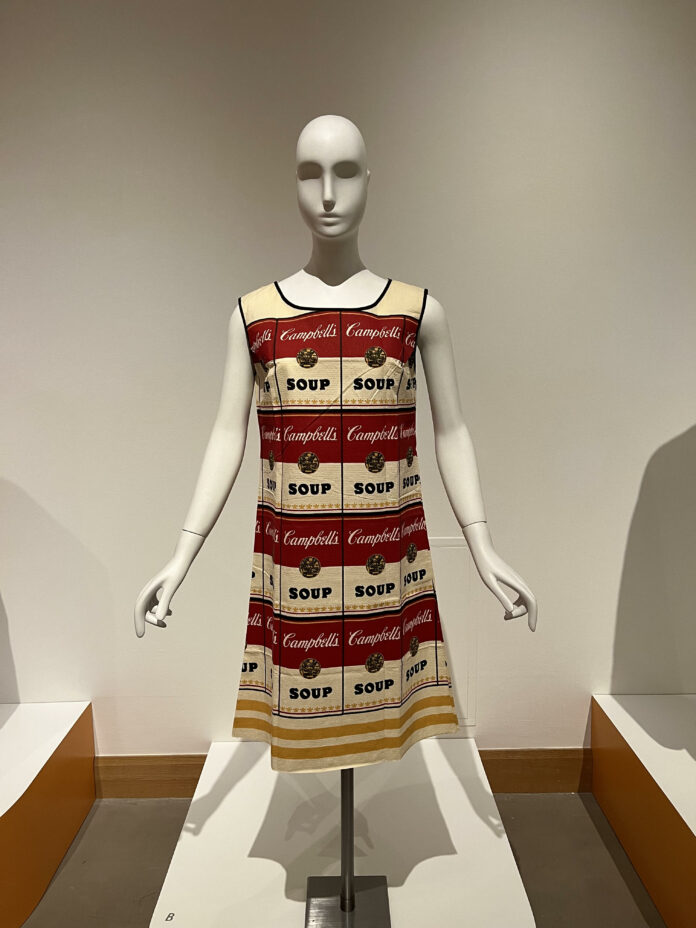Art takes many forms. Whether it be literature, fine art, performance art, studio art and so on, art is all around us. It is used as a form of expression. For many, when thinking about art, we are trying to understand it through the lens of the artist, and what emotions and feelings they are trying to convey and evoke. I have found that through observing various art forms, a lot of art is a reflection of the current political and social climate of the time.
In observing art at Muhlenberg, I have found that many pieces have had either underlying or overt political commentary weaved in. Whether it be observing art at the Martin Art Gallery, or watching a performance put on in the Studio Theater, I have walked away with more insight on how artistic expression is hand-in-hand with the environment art is created in.
When the “Glut and Guzzle” exhibit was on display in the Baker Center for the Arts (CA) Galleria, there were many different opinions surrounding it, because of how provocative the art seemed to be. When the artist, Ashe Kaye, came to deliver a talk about the exhibit and their messaging in the art, it was clear that the directness of their sculptures and photographs was intentional, and discomfort was a welcome feeling. There was an overarching theme of gender expression and acceptance, and the discomfort audiences may have felt observing the exhibit was intended. It was to evoke conversation around gender expression in modern society, and where our discomfort with blunt portrayals of gender stems from. So while at first glance an observer may not see the exhibit as reflective of the social climate of our time, the display was inherently political, from its messaging down to the feeling it created in the observer.
Along with fine art, performance art has been proven to incorporate different political messaging in itself. Muhlenberg’s “In Motion” 2024 included a piece titled, “The Alchemy of Bantaba,” and this served as a commentary on white-dominating dance styles, white supremacy, resistance and solidarity. This was a dance piece that sought to convey the intersectionality of dance, and how artists and dancers of color have resisted white hegemony and have found solidarity together.
When trying to understand an art form, it is typical to try and dissect the meaning from the artist’s lens: what they were feeling, and what they wished for us to feel. Art is intimate and personal, and it is often viewed as a look into someone’s brain or someone’s heart. This is a large reason art contains so many political and social themes. Politics is inherent to everything we do, especially in modern society, so it is foolish to believe that artists are not incorporating political themes in their craft, in one way or another. Even in fashion, we have seen how this is an art that is heavily influenced by a period’s political and social climate. In a now archived exhibit in the Allentown Art Museum, there was an exhibit titled “Fashion as Experiment: the 60s” which was dedicated to examining fashion and how it was inspired by young people’s attitudes to the American government at that time.
Thrifting, along with experimenting with styles that were not gender normative were both large presences in the fashion scene in the ‘60s. This was to reflect how the youth of the time were deeply dissatisfied with the government, so their way of rebellion was through their clothing. Art is in the clothes we wear, and the political and social signaling hidden in that is another way that shows how politics and art are so intertwined.
Muhlenberg is known as a campus rich in the arts. Performance arts, fine arts and literary arts, you name it. At a school with so much art all around us, it can make our experience here so much more insightful and enlightening to recognize how multifaceted the art around us is. There is much more messaging and meaning in the art we consume intentionally and unintentionally. Politics and art are both two constructs that are inherent to us as people; they find a way into our lives without us even realizing.
Shinam ‘25 is a political science and sociology major at Muhlenberg. She is immensely excited to be apart of the Weekly staff! When she isn’t writing, she can be found reading a book or watching a comfort show with her favorite fast food!























